You’ve probably been there at least once. Maybe it happened at a restaurant, or a party at a friend’s house. You take a bite of food, and, instantly your mouth is on fire and you find yourself lunging for the nearest glass of water (which, by the way, is the worst thing to reach for when you eat something spicy! More on that later). Peppers can be sneaky because some are sweet while others will have your mouth burning for an hour. So, here's a simple guide to peppers to help!
The Scoville scale is used to measure the level of heat in peppers. Levels range from 0 for sweet peppers to 1,000,000 for the world’s spiciest peppers. The scale is named after an American pharmacist, Wilbur Scoville, who devised his method of measuring the heat of peppers in 1912. One thing to remember, though, is the scale is only as accurate as the sensitivity of the person eating the pepper. Capsinoids are what gives the pepper it’s level of heat, and some people are more sensitive to capsinoid concentration than others.
Keeping this in mind, here is a pepper guide based on the Scoville scale, which should, hopefully, help you avoid the burning tongue syndrome. I’ve listed the most frequently recognized peppers, but there are multiple peppers in most categories ranging from those commonly found in the grocery store to those found in specialty stores.
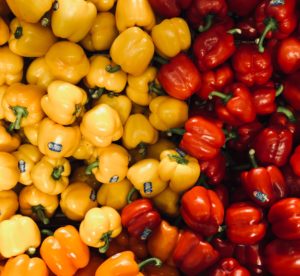
Photo by Sydney Rae
Heat Index: 0 (no spice) = Bell Peppers
This includes red, yellow and green bell peppers. They are the sweetest of the peppers and have absolutely no heat, making them perfect for a wide variety of uses from soups to stews, to salads and sauces.
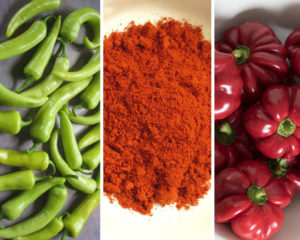
photo credit (l to r): wikimedia, wikimedia, johnny's selected seeds
Heat Index: 100 – 1000 (mild) = Banana pepper, Paprika and Pimento
These peppers are a good stepping stone if you're looking to add subtle heat to your food.
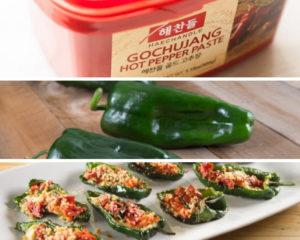
photo credit (top to bottom): amazon, daily harvest market, food network
Heat Index: 1,000-3,500 (mild-medium) = Gochujang, Pasilla Pepper, Poblano
Gochujang is a red chili paste and often found in Korean dishes. Pasilla Pepper is common in Mexican cuisine and you will usually find it dried. The Poblano Pepper is a mild pepper used to make chili rellenos.

photo credit: Caribbean Garden/etsy
Heat Index: 3,500 – 10,000 (mild-medium)= Fresno Chili Pepper, Jalapeno
The Fresno Chili Pepper is commonly mistaken for the Red Bell Pepper, but this is the perfect example of how looks can be deceiving. It may look like a red bell pepper, but the fresno chili pepper has a touch of spice not found in the red bell pepper.
The Jalapeno has a wide variety of uses due to it’s medium spice – from salsas, to sauces to stuffing them with cheese.
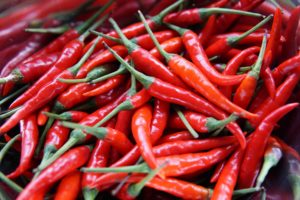
Photo by Elle Hughes
Heat Index: 10,000-30,000 (medium-spicy) = Serrano Pepper
There tends to be a lot of spice packed into this small little pepper, so be mindful of how much you use!
Heat Index: 30,000 – 50,000 (medium – spicy)= Cayenne Pepper, Tabasco Pepper
Cayenne is most often used in a powdered form, and you’ll find Tabasco mostly in liquid form.
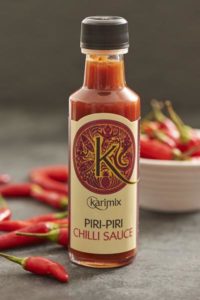
photo credit: the art of creative cooking
Heat Index: 50,000 – 100,000 (spicy) = Malagueta Pepper
You’ll find this pepper used in Brazilian cuisine, especially piri piri sauce.
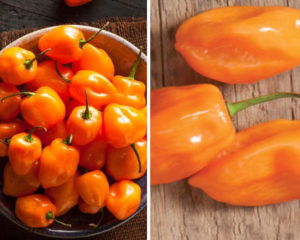
photo credits: (l to r) pepper joe, johnny's selected seeds
Heat Index: 100,000 – 350,000 (spicy) = Habanero Pepper, Scotch bonnet pepper
These are two varieties of the same species, however the habanero also has, in addition to it’s heat, a citrus-like flavor which makes it a great addition to spicy foods and sauces.
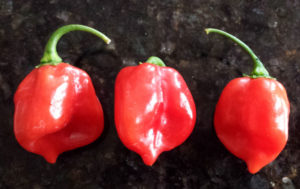
photo credit: hot toddy pepper company
Heat Index: 350,000 – 580,000 (“burn your tongue off “spicy)= Red Savina Habanero
This pepper held the Guiness World Record for hottest pepper from 1994-2006.
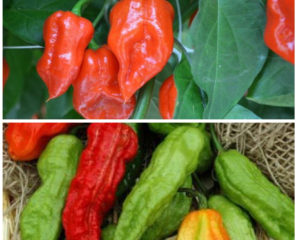
photo credit: caribbean garden, harris seeds
Heat Index: 855,000 – 2,200,000 (“burn your face off” spicy) = Komodo Dragon Chili Pepper and Ghost Pepper
These are known as the world’s hottest peppers. You’ve been warned.
Tips for cooking with peppers:
- The heat of the pepper is held mostly in the pith and ribs (the white stuff inside the pepper) because this is where the capsinoids are located. Remove the pith and ribs to mellow out the heat. However, in the peppers that are higher on the Scoville scale, there will still be heat in the skin, so be aware that for the spiciest of the peppers, removing the pith and ribs will only remove some of the heat, not all of it.
- If you want to add some heat, use less pepper. You can always add more pepper to a recipe to make it spicier, but if it’s too spicy it’s difficult to remove the heat.
- When cooking with spicy peppers, always use gloves. The spice from the pepper can get on your hands, and if you don’t immediately wash them you can accidentally transfer that spice to your eyes of you rub them.
- I like to serve bread and milk when I cook something spicy. Water exacerbates the spiciness and doesn’t help to cool a burning tongue. Milk and/or bread help to calm the spice and sooth a mouth that is on fire.
Now that you know all about cooking with peppers, here are some recipes to test out your new knowledge!
Click the links below and don't forget to let me know in the comments what YOUR favorite pepper recipe is to cook!
5 Alarm Chili with Skillet Corn Bread
Crispy Tacos de Papa with Roasted Poblanos
To keep up with what's cooking in my kitchen follow me on Facebook, and Instagram. When you cook one of my menus, don't forget to tag your photos #amenuforyou!


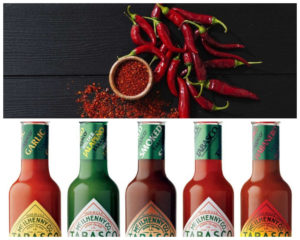
No Comments